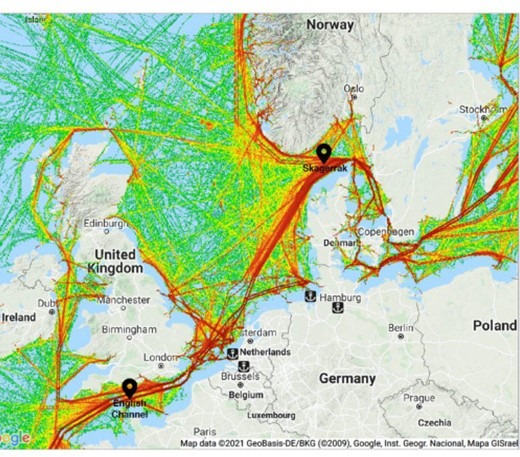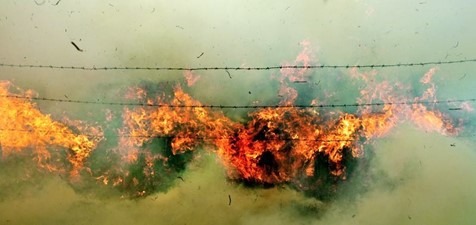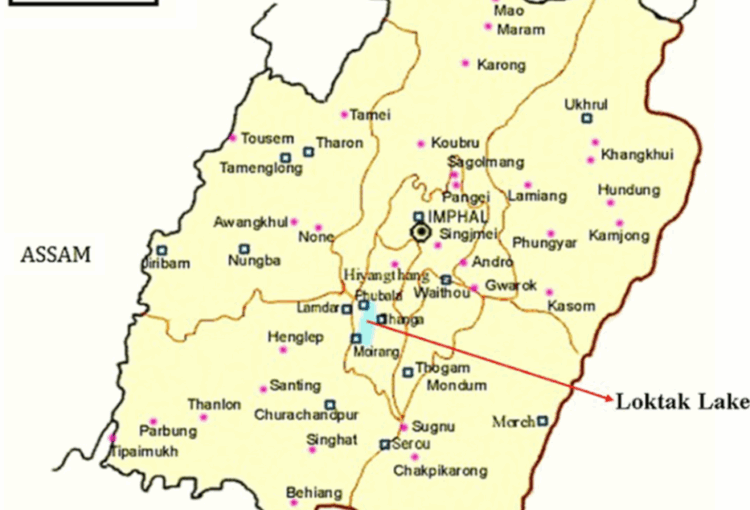Shifting Cheetahs From Kuno Park to Gandhi Sagar
Syllabus :GS 3/ Environment
- The Cheetah Project Steering Committee has approved the relocation of cheetahs from Kuno National Park to Gandhi Sagar Wildlife Sanctuary in Madhya Pradesh, ~300 km away.
- Aim: To establish a metapopulation of 60–70 cheetahs across the Kuno-Gandhi Sagar landscape, covering parts of Madhya Pradesh and Rajasthan.

Project Cheetah – Overview
- Launched in 2022 with 8 cheetahs from Namibia and 12 from South Africa
- Since then, 8 adult cheetahs and 5 cubs have died
Implemented by the National Tiger Conservation Authority (NTCA) under MoEF&CC, in partnership with:
- Madhya Pradesh Forest Department
- Wildlife Institute of India (WII)
- Cheetah experts from Namibia & South Africa
Did You Know?
- Cheetahs are the world’s fastest land animals (60–70 mph)
- Adapted with a slender build, long limbs, and semi-retractable claws
- Once widespread in Africa and Asia, now found in only 10% of their original range
- A critically endangered population exists in Iran
- Declared extinct in India in 1952
Cheetah Status at Kuno (2025):
- 26 cheetahs total
- 17 in the wild, 9 in enclosures
- Relocation group yet to be decided
About Gandhi Sagar Wildlife Sanctuary
- Located in eastern Madhya Pradesh, along the Chambal River, near Gandhi Sagar Dam
- Part of the Khathiar-Gir Dry Deciduous Forests eco-region
- Features mixed dry deciduous vegetation
- Houses the Chaturbhuj Nala rock shelters with prehistoric cave paintings
With reference to cheetah conservation efforts in India, consider the following statements:
- The relocation of cheetahs from Kuno National Park to Gandhi Sagar Wildlife Sanctuary is aimed at enhancing genetic diversity within a confined breeding population.
- Gandhi Sagar Wildlife Sanctuary lies within the Central Indian Highlands and belongs to the Northern Tropical Moist Deciduous Forests eco-region.
- Project Cheetah is implemented solely by the National Tiger Conservation Authority without international collaboration.
- Cheetahs have been reintroduced into India despite being globally classified as extinct in the wild.
Which of the statements given above is/are correct?
A. 1 and 2 only
B. 1 and 4 only
C. 3 and 4 only
D. None of the above
Answer: D. None of the above
Explanation:
- Statement 1 is incorrect because the relocation aims to establish a metapopulation across a landscape to ensure population stability and resilience, not merely to enhance genetic diversity within a confined group.
- Statement 2 is incorrect as Gandhi Sagar Wildlife Sanctuary falls under the Khathiar-Gir Dry Deciduous Forests eco-region, not the Northern Tropical Moist Deciduous type.
- Statement 3 is incorrect because Project Cheetah is being implemented by the NTCA in collaboration with the Madhya Pradesh Forest Department, Wildlife Institute of India, and international experts from Namibia and South Africa.
- Statement 4 is incorrect as cheetahs are not globally extinct in the wild; they are present in parts of Africa and Iran. They were declared extinct in India in 1952, not globally.
Type 5 Diabetes
Syllabus:Health
- In a landmark development, the International Diabetes Federation (IDF) officially recognised Type 5 Diabetes as a distinct medical condition during the World Diabetes Congress in Bangkok.
- This form of diabetes, largely overlooked until now, primarily affects malnourished individuals and poses a significant yet under acknowledged public health challenge.

Key Features of Type 5 Diabetes
- Etiology: Type 5 Diabetes is a malnutrition-related form of diabetes, distinct from both Type 1 and Type 2.
- Demographics: It predominantly affects lean and malnourished adolescents and young adults, particularly in low- and middle-income countries (LMICs), with high prevalence in regions of Asia and sub-Saharan Africa.
- Global Burden: Estimated to affect 20–25 million people worldwide, it is considered more prevalent than tuberculosis and nearly as widespread as HIV/AIDS.
- Pathophysiology: The disease is characterised by a deep defect in insulin secretion, unlike Type 2 diabetes, which involves insulin resistance. Emerging research also suggests that insulin therapy may be harmful for Type 5 patients, indicating a critical need for tailored treatment strategies.
Historical Context
- First described in 1955 in Jamaica as J-type diabetes, similar cases were subsequently reported during the 1960s across India, Pakistan, and sub-Saharan Africa.
- While the World Health Organization (WHO) recognised the condition in 1985, it later retracted this status in 1999 due to limited longitudinal research and diagnostic ambiguity.
Recent Developments and Institutional Response
Recognising the growing burden and diagnostic challenges of the disease, the IDF has constituted a working group to:
- Formulate diagnostic and therapeutic protocols within the next two years.
- Establish a global patient registry to support clinical research and data-sharing.
- Develop educational modules for healthcare professionals to improve diagnosis and disease management.
- This move is seen as a critical step toward addressing the systemic neglect of malnutrition-linked non-communicable diseases, particularly in resource-limited settings.
Challenges Ahead
- The lack of formal recognition and classification until recently has contributed to significant under-diagnosis and mistreatment.
- The absence of standardised diagnostic criteria and widespread awareness has hampered clinical response and policy formulation.
- As global health systems increasingly address both communicable and non-communicable diseases in tandem, the recognition of Type 5 Diabetes may serve as a turning point in rethinking nutrition-linked metabolic disorders, especially in underserved populations.
Consider the following statements regarding the recently recognised Type 5 Diabetes:
- It primarily affects overweight adults in high-income countries.
- Type 5 Diabetes is marked by a fundamental defect in insulin secretion rather than insulin resistance.
- The World Health Organization (WHO) has continuously recognised Type 5 Diabetes since 1985.
- The International Diabetes Federation (IDF) plans to develop formal guidelines and establish a global registry for this condition.
Which of the statements given above is/are correct?
A) 1 and 3 only
B) 2 and 4 only
C) 2, 3, and 4 only
D) 1, 2, and 4 only
Answer: B) 2 and 4 only
Explanation:
- Statement 1: Incorrect. Type 5 Diabetes does not affect overweight adults in high-income countries. It predominantly affects lean and malnourished teenagers and young adults, especially in low- and middle-income countries across Asia and Africa.
- Statement 2: Correct. Unlike Type 2 diabetes, which is primarily due to insulin resistance, Type 5 diabetes is marked by a deep defect in insulin secretion.
- Statement 3: Incorrect. Although the WHO initially recognised this condition in 1985, it withdrew this recognition in 1999 due to insufficient follow-up research.
- Statement 4: Correct. The International Diabetes Federation (IDF) has acknowledged Type 5 Diabetes recently and has created a working group tasked with developing formal diagnostic and therapeutic guidelines. A global registry is also being planned.
Space Tourism
Syllabus:Defence
- The recent sub-orbital flight of pop icon Katy Perry aboard Blue Origin’s New Shepard—manned entirely by an all-female crew—has reignited global debates around space tourism, particularly concerning its cost, environmental footprint, and ethical implications.
What is Space Tourism?
- Space tourism refers to commercial travel beyond Earth’s atmosphere, primarily for recreational or business purposes, facilitated by private aerospace firms such as Blue Origin, SpaceX, and Virgin Galactic.
- Unlike state-sponsored missions, these ventures cater to civilian space enthusiasts, albeit at prohibitive costs.
Types of Space Tourism
Sub-Orbital Tourism
- Altitude: Crosses the Kármán line (~100 km above Earth).
- Duration: Brief (~10–15 minutes); offers a few minutes of weightlessness.
- Example: Katy Perry’s 11-minute flight via New Shepard.
Orbital Tourism
- Scope: Involves multiple days in Earth’s orbit, often with ISS docking.
- Example: SpaceX’s Crew Dragon
- Lunar Tourism (Proposed)
- Future Prospects: Envisions circumnavigation or landing on the Moon.
- Example: SpaceX’s DearMoon project (target launch: 2025).
Key Concerns
Economic Exclusivity
- Ticket prices range from $450,000 to several million dollars, restricting access to ultra-wealthy individuals.
- Over 1,000 private bookings despite massive global wealth disparities.
Environmental Impact
- Rocket launches emit significant carbon dioxide and ozone-depleting substances.
- A single Blue Origin launch releases 300+ tons of CO₂—equivalent to emissions from 75 cars in a year.
Limited Scientific Output
- Tourist flights often lack meaningful contributions to science, unlike research-focused government missions.
- Comparatively, the ISS continues to yield groundbreaking data on microgravity and space biology.
Safety Concerns
- Private sector flights face heightened technical and safety risks.
- Example: A 2022 Virgin Galactic crash led to suspension of subsequent missions.
- Ethical Dilemmas
- The burgeoning $1.3 billion industry could potentially be redirected to address pressing global challenges like climate change and poverty.
Way Forward
- Regulate Rocket Emissions
- Promote adoption of carbon-neutral and ozone-friendly propulsion systems.
Example: ESA’s Prometheus engine cuts emissions by up to 90%.
- Democratize Space Access
- Subsidize public research seats or introduce lottery-based civilian selection models.
Example: NASA’s civilian astronaut program targets non-elite candidates.
- Mandate Scientific Payloads
- Enforce inclusion of research modules on commercial flights.
Example: Axiom Space’s collaboration with international research bodies for ISS missions.
- Tax Luxury Space Travel
- Implement “Space Taxes” to funnel revenues into climate resilience and space sustainability.
Example: European Union’s proposed tax on private launches.
- Promote Earth-Centric Policies
- Shift focus from space leisure to Earth-monitoring capabilities.
Example: ISRO’s EOS-6 aids in climate and ocean monitoring.
Conclusion
- Space tourism stands at the intersection of human aspiration and socio-environmental responsibility.
- While it exemplifies technological progress, unchecked growth may exacerbate inequality and ecological stress.
- A regulated, inclusive, and research-driven approach is essential to align private space ventures with the broader goals of scientific advancement and planetary stewardship.
Which of the following is a key distinguishing feature of Space Tourism compared to traditional space missions?
- Space tourism primarily focuses on government-funded research.
- Space tourism involves private companies offering recreational travel beyond Earth’s atmosphere.
- Space tourism is limited to orbital flights
- Space tourism is restricted to scientific astronauts.
Select the correct answer using the code below:
A) 1 and 3 only
B) 2 and 4 only
C) 2 only
D) 1, 3, and 4 only
Answer: C) 2 only
Explanation:
- Option 1: “Space tourism primarily focuses on government-funded research.”
This is incorrect. - Space tourism is not primarily focused on research; instead, it involves recreational, leisure, or business travel beyond Earth’s atmosphere, typically offered by private companies like Blue Origin, Virgin Galactic, and SpaceX.
- It contrasts with traditional space missions, which are generally government-funded and research-oriented (e.g., NASA, ISRO).
- Option 2: “Space tourism involves private companies offering recreational travel beyond Earth’s atmosphere.”
- This is correct. Space tourism is driven by private companies that provide commercial spaceflights to civilians, typically for recreational or business Unlike traditional space missions, which are government-led and typically focused on exploration or scientific research, space tourism is about giving civilians the experience of traveling into space.
- Option3:”Space tourism is limited to orbital flights only.”This is incorrect. Space tourism includes a range of flight types, including sub-orbital flights (e.g., Blue Origin’s New Shepard) where the spacecraft crosses the Kármán line (the boundary of space), but doesn’t stay in orbit.
- Orbital tourism (e.g., SpaceX’s Crew Dragon) is one part of space tourism, but it is not the only type. Option 4: “Space tourism is restricted to scientific astronauts.”This is incorrect.
- Unlike traditional space missions where astronauts are trained for research or scientific purposes, space tourism is open to civilian passengers who are not necessarily scientific astronauts.
- The passengers typically pay for the experience and do not require the extensive training or professional expertise that traditional astronauts do.
India–Norway Marine Pollution Initiative
Syllabus:IR
- The India–Norway Marine Pollution Initiative (INMPI) has played a pivotal role in reducing plastic waste and enhancing waste circularity in Agra, significantly minimizing plastic leakage into the Yamuna River.
- Notably, the initiative has achieved successes in managing petha and footwear waste, contributing to improved local environmental practices.

About the India–Norway Marine Pollution Initiative (INMPI)
- The INMPI is a bilateral collaboration between the Government of India and the Government of Norway.
- The initiative primarily aims to address marine litter, with a focus on microplastics (MPs) and macroplastics that originate from land-based sources.
- Launched: 2019, under the framework of the India–Norway Ocean Dialogue.
Objectives:
- Reduce plastic and microplastic pollution in aquatic ecosystems, especially in rivers and oceans.
- Support the circular economy through efficient waste management practices.
- Promote policy reform, local action, and scientific research to combat plastic pollution.
- Assist municipalities with evidence-based strategies to reduce plastic leakage.
Key Features of the INMPI
- Technical Support: The initiative provides technical assistance to Indian cities through leading environmental organisations, including the Centre for Science and Environment (CSE).
- Pilot Projects: The initiative has conducted pilot projects in riverine cities like Agra, focusing on waste management and plastic pollution reduction.
Research Focus: It includes studies on:
- Pre-consumer industrial waste.
- Plastic drainage leakage.
- Microplastic contamination in water bodies.
- Policy Influence: The initiative uses tools such as brand audits, polymer categorisation, and scientific sampling to inform policy decisions and foster sustainable solutions.
With reference to the India–Norway Marine Pollution Initiative (INMPI), consider the following statements:
- It aims exclusively at reducing marine litter from ocean-based sources such as fishing vessels and oil rigs.
- The initiative operates under the broader umbrella of the India–Norway Ocean Dialogue and promotes circular economy principles.
- It provides direct financial aid to Indian municipal corporations for implementing plastic waste management reforms.
- One of its key components includes conducting scientific assessments such as brand audits and polymer categorisation to inform policy action.
Which of the statements given above is/are correct?
A) 2 and 4 only
B) 1, 3, and 4 only
C) 2 only
D) 1, 2, and 3 only
Answer: A) 2 and 4 only
- Statement 1: “It aims exclusively at reducing marine litter from ocean-based sources such as fishing vessels and oil rigs.”
- Statement 2: “The initiative operates under the broader umbrella of the India–Norway Ocean Dialogue and promotes circular economy principles.”
- Statement 3: “It provides direct financial aid to Indian municipal corporations for implementing plastic waste management reforms.”
- Statement 4: “One of its key components includes conducting scientific assessments such as brand audits and polymer categorisation to inform policy action.”
Governmentality and Stubble Burning
Syllabus:Ecology
- A 2025 study by IIM Amritsar presents a critical examination of stubble burning in Punjab, linking it to deeper structural issues of governmentality and market distortions, rather than mere farmer negligence.
- The research underscores how state policies—especially those around Minimum Support Prices (MSP)—inadvertently incentivize unsustainable agricultural practices.

Understanding Governmentality in the Agricultural Context
Coined by Michel Foucault, governmentality refers to the art of governing not just through laws and coercion but by shaping the behavior and rationality of citizens. In agriculture, it manifests in multiple forms:
- Neoliberal Governmentality
- State uses market instruments like MSPs to steer farmer decisions indirectly.
Example: MSP disproportionately favors paddy and wheat, leading to entrenched monoculture and discouraging crop diversification.
- Disciplinary Governmentality
- Enforcement-based approach with penalties for non-compliance but few incentives or alternatives.
Example: Punjab imposes fines of up to ₹2.5 lakh for stubble burning without adequate access to sustainable residue management.
- Pastoral Governmentality
- The state projects itself as a caretaker but prioritizes urban-industrial concerns over rural livelihoods.Example: While farm fires are blamed for Delhi’s pollution, industrial PM2.5 emissions remain under-regulated.
- Security-Oriented Governmentality
- Focus on food security leads to overemphasis on paddy and wheat, sidelining environmental sustainability.Example: Punjab produces 35 million tonnes of paddy residue annually with inadequate disposal alternatives.
- Market-Driven Governmentality
- Dominance of arhatias (middlemen) distorts market pricing and access to credit, locking farmers in debt cycles.Example: Farmers receive ₹1,900/quintal for paddy despite open market rates exceeding ₹2,500.
How Governmentality Exacerbates Environmental Degradation
- MSP-Induced Monoculture: 85% of Punjab’s paddy cultivation is linked to MSP, leaving little scope for ecological farming.
- Technology Gap: Only 15% of farmers access machines like happy seeders or bio-decomposers, due to inadequate subsidy penetration.
- Urban Bias in Enforcement: Despite contributing 30% of Delhi’s PM2.5, industries face less scrutiny than farmers.
- Credit Exploitation: With 60% of farmers in debt (NABARD 2022), burning becomes a cost-effective, though harmful, practice.
- Token Incentives: Schemes like ₹100/quintal for non-burning behavior reach only 20% of farmers, failing to tackle root causes.
Conclusion
- Stubble burning is less an act of defiance and more a symptom of policy-induced environmental degradation.
- Rectifying the crisis demands structural reforms—from revisiting MSP frameworks to establishing stubble-based value chains and eliminating middlemen distortions.
- A just, inclusive, and ecological agricultural policy is essential to safeguard both rural livelihoods and environmental sustainability.
With reference to stubble burning and the theory of governmentality, consider the following statements:
- Neoliberal governmentality in Indian agriculture manifests through market-based tools like the Minimum Support Price (MSP), which indirectly encourage ecologically harmful cropping patterns.
- Disciplinary governmentality is exemplified by penal provisions against stubble burning without sufficient institutional or financial support for sustainable alternatives.
- Pastoral governmentality reflects the state’s preference for farmers’ welfare over urban environmental concerns by heavily subsidizing residue management machinery.
- Security-oriented governmentality prioritizes food security goals but often overlooks long-term ecological consequences of monoculture practices.
Which of the statements given above are correct?
A) 1 and 2 only
B) 1, 2, and 4 only
C) 2, 3, and 4 only
D) 1, 3, and 4 only
Correct Answer: B) 1, 2, and 4 only
Explanation:
- Statement 1 –Correct: MSP acts as a market signal that incentivizes rice-wheat monoculture, particularly in Punjab, contributing to environmental degradation like stubble burning. This aligns with neoliberal governmentality, where the state influences behavior through economic incentives rather than direct orders.
- Statement 2 – Correct:Fines for stubble burning without providing viable alternatives like Happy Seeders or bio-decomposers is a classic example of disciplinary governmentality, which focuses on compliance rather than empowerment.
- Statement 3 – Incorrect:Pastoral governmentality critiques how the state appears to act in the farmers’ interest, while in reality prioritizing urban-industrial interests, such as Delhi’s air quality, often ignoring the socio-economic conditions of rural communities. There is no evidence of heavy subsidies in this domain; in fact, only a fraction of farmers access such benefits.
- Statement 4 – Correct:Security-oriented governmentality emphasizes national food security (e.g., through paddy procurement), but neglects the environmental costs of monoculture and residue burning.
Sir Sankaran Nair
Syllabus:Person in News
Context: On the 106th anniversary of the Jallianwala Bagh massacre, the Prime Minister of India paid tribute to Sir Sankaran Nair, lauding his resolute stand against colonial injustice and his legal confrontation with the British Empire.

Early Life and Education:
- Born in 1857 in Mankara village, Malabar region (now Kerala).
- Graduated in law from Presidency College, Madras.
- Trained under Sir Horatio Shepherd, who later became Chief Justice of the Madras High Court.
Legal and Administrative Career:
- Appointed Public Prosecutor in 1899 and later elevated as Judge of the Madras High Court in 1908.
- Knighted in 1912 for his distinguished service.
- Served on the Viceroy’s Executive Council (1915), overseeing education reforms.
- Resigned in 1919 in protest against the Jallianwala Bagh massacre, marking one of the earliest high-level resignations against British atrocities.
Role in Indian Nationalist Movement:
- President of the Indian National Congress Session at Amraoti in 1897.
- Member of the Simon Commission’s Indian Committee (1928–29), though with limited success.
- Served as Councillor to the Secretary of State for India (1920–21) in London.
- Advocated for constitutional reforms and dominion status for India.
- Maintained a critical stance against both colonial repression and Gandhi’s mass movements, seeking a balanced constitutional path to self-rule.
Jallianwala Bagh Case and Legacy (1922–24):
Authored “Gandhi and Anarchy”, in which he:
- Criticized the non-cooperation movement for its disruptive impact.
- Simultaneously condemned General O’Dwyer and colonial brutality.
- Faced a defamation suit in the British court by O’Dwyer.
- Though he lost the case, he refused to apologise, upholding moral integrity over legal victory.
- The trial exposed British judicial partiality and deepened nationalist resolve.
Social Reform and Jurisprudence:
- A strong advocate of social justice and progressive legal interpretations.
- In Budasna v. Fatima (1914), ruled in favour of:
- Religious conversion without caste exclusion.
- Legitimising inter-caste and inter-faith marriages.
- Founded and edited two influential journals:
- Madras Law Journal
- Madras Review
Legacy:
- Sir Sankaran Nair remains an enduring symbol of intellectual resistance, judicial integrity, and reformist zeal.
- His principled resignation, reformist judgements, and bold articulation of Indian rights against imperial power place him among the towering figures of India’s constitutional and nationalist evolution.
Which of the following statements correctly highlight the historical significance of Sir Chettur Sankaran Nair in India’s freedom struggle?
- He resigned from the Viceroy’s Executive Council in protest against the Rowlatt Act.
- He presided over the Indian National Congress session that demanded complete independence for the first time.
- His legal confrontation with Michael O’Dwyer exposed the British judiciary’s racial bias in colonial courts.
- He advocated for progressive social reforms, including legitimising inter-caste marriages and conversions without caste loss.
Select the correct answer using the code below:
A) 1 and 2 only
B) 3 and 4 only
C) 1, 2, and 3 only
D) 2, 3, and 4 only
Answer:B) 3 and 4 only
Explanation:
- Statement 1 – Incorrect:Sankaran Nair resigned from the Viceroy’s Executive Council in protest of the Jallianwala Bagh massacre (1919), not the Rowlatt Act (1919).
- Statement 2 – Incorrect:He presided over the INC session in 1897 (Amraoti), which did not demand complete independence. That demand was first made in the 1929 Lahore Session under Jawaharlal Nehru.
- Statement 3 – Correct:His defamation case filed by Michael O’Dwyer (1922–24) in a British court revealed deep-rooted racial and imperial bias, galvanizing nationalist sentiment in India.
- Statement 4 – Correct:In his judicial rulings, like Budasna v Fatima (1914), he upheld conversion without caste loss, supporting inter-caste and inter-faith marriages, showcasing his reformist mindset.
GPS Spoofing
Syllabus:Security
- Indian Air Force (IAF) aircraft delivering humanitarian aid to earthquake-hit Myanmar under Operation Brahma reportedly encountered GPS spoofing attacks, raising critical concerns over airspace cybersecurity and navigational safety.

What is GPS Spoofing?
- GPS spoofing is a form of cyberattack wherein deceptive GPS signals are broadcast to trick a receiver into computing a false position.
How It Works:
- GPS receivers determine location by triangulating signals from multiple satellites.
- Spoofers emit counterfeit signals that are stronger than authentic satellite signals.
- The receiver locks onto these fake signals, leading to mislocation or navigation errors.
Implications of GPS Spoofing:
- Aviation Safety:
- Aircraft may be misdirected, especially in foreign or conflict-prone airspaces.
- Risks include mid-air navigation errors, loss of situational awareness, and compromised emergency response.
- Strategic & Defense Threats:
- Military aircraft, UAVs, and reconnaissance missions can be diverted or deceived, undermining national security.
- Potential for hostile interventions or surveillance manipulation.
- Civilian Infrastructure Disruption:
- Rideshare apps, logistics networks, and delivery services may provide erroneous routing.
- Can result in economic losses, public inconvenience, and emergency response delays.
- Cybersecurity Concerns:
- Spoofing attacks can be a vector for larger breaches, including data theft, identity spoofing, and critical system interference.
With reference to GPS spoofing, consider the following statements:
- GPS spoofing attacks rely on sending encrypted signals that overpower legitimate satellite transmissions.
- Such attacks pose a higher threat to military operations than to civilian navigation systems.
- Multi-constellation GNSS receivers can help detect spoofing by cross-verifying signals from multiple satellite networks.
- The Indian Air Force (IAF) has demonstrated operational resilience against GPS spoofing during cross-border humanitarian missions.
Which of the above statements are correct?
A) 1, 2 and 3 only
B) 2, 3 and 4 only
C) 1, 3 and 4 only
D) 1, 2, 3 and 4
Correct Answer: B) 2, 3 and 4 only
Explanation:
- Statement 1 – Incorrect: GPS spoofing uses unencrypted false signals that mimic real GPS transmissions, not encrypted ones. The aim is to deceive the receiver, not decode or overpower secure signals.
- Statement 2 – Correct: Military and defense systems heavily depend on precise location data, often in contested environments. GPS spoofing can mislead operations, drones, or aircraft, posing greater strategic risks than in civilian systems.
- Statement 3 – Correct: GNSS receivers that use multiple satellite systems (GPS, GLONASS, Galileo, IRNSS) can compare inconsistencies and flag suspicious readings, helping detect spoofing.
- Statement 4 – Correct: As reported, IAF pilots successfully navigated GPS spoofing threats during Operation Brahma, showcasing preparedness and resilience in handling cyber-navigation warfare.
Thangjing Hills
Syllabus: Geography
Context:
- The annual pilgrimage by Meitei devotees to the sacred Thangjing Hills in Manipur was recently halted due to objections from the Kuki-Zo community, highlighting the underlying ethnic tensions in the region.
About Thangjing Hills:
- Location:
Situated in the Churachandpur district of western Manipur, forming part of the Thangjing Hill Range.
Topography:
- Elevation: Approximately 2,100 meters (6,900 feet) above sea level.
- Characterized by dense forests, high ridges, and steep terrains.
- Acts as a natural boundary between the Meitei-dominated Imphal Valley and the Kuki-Zo-inhabited hill districts.
Hydrology: The region is watered by rivers such as Leimatak, Tuila, Lanva, and Khuga, with tributaries supporting both hill and valley settlements.
Geopolitical Sensitivity:Lies within a buffer zone that has historically witnessed ethnic contestation and competing claims over land, identity, and religious rights.

Religious and Cultural Significance:
- Sacred Geography:Revered by the Meitei community as the divine abode of Eputhou Thangjing, a principal deity and protector of southern Manipur.
- Annual Pilgrimage:Conducted during the Meitei lunar month of Sajibu (typically April), especially around the full moon day.
- Mythological Connection:The site is deeply embedded in Meitei cosmology, featuring in cultural epics such as the legendary love story of Khamba and Thoibi.
Which of the following is the primary religious significance of Thangjing Hills in Manipur?
- It is considered the sacred abode of the Meitei deity Eputhou Thangjing.
- The hills are considered a symbol of unity between the Meitei and Kuki-Zo communities.
- The pilgrimage to Thangjing Hills is a part of the Kuki-Zo religious tradition.
- The site is linked to the Khamba-Thoibi legend, central to Meitei mythology.
Select the correct answer using the code below:
A) 1 and 4 only
B) 2 and 3 only
C) 1, 3, and 4 only
D) 1, 2, and 4 only
Answer: A) 1 and 4 only
Explanation:
- Thangjing Hills is regarded as the sacred abode of Eputhou Thangjing, a central Meitei deity.
- It is also linked to the Khamba-Thoibi myth, which is integral to Meitei folklore.
- The opposition from the Kuki-Zo community is rooted in ethnic tensions rather than religious unity, hence the other options are incorrect.
Index Numbers of Wholesale Price in India Of March 2025
Syllabus:Indices
- The Department for Promotion of Industry and Internal Trade (DPIIT) released the Wholesale Price Index (WPI) data for March 2025 on April 15, 2025.
- The provisional data reveals that annual WPI inflation stood at 2.05%, compared to the same month in 2024.
- The upward trend was primarily driven by price increases in the manufacture of food products, textiles, electricity, and other manufactured goods.
- As an important macroeconomic indicator, WPI reflects price movements at the wholesale level, serving as a crucial tool for policymakers, analysts, and competitive exam aspirants alike

At a Glance: WPI – March 2025
Released By: DPIIT, Ministry of Commerce and Industry
Published By: Press Information Bureau (PIB), New Delhi
Date of Release: April 15, 2025
Reference Period: March 2025
Base Year: 2011–12
WPI Inflation Trends by Major Components
- All Commodities (Weight: 100%)
- Index: 154.5
- Year-on-Year (Y-o-Y) Inflation: 05%
- Shows a moderating trend from 38% in February and 2.51% in January 2025
- Primary Articles (Weight: 22.62%)
- Index: 184.6
- Inflation Rate: 76% (sharp decline from 2.81% in February)
- Month-on-Month (M-o-M) Change: -1.07%
- Sub-categories:
- Crude Petroleum & Natural Gas: -2.42%
- Non-food Articles: -2.40%
- Food Articles: -0.72%
- Minerals: +0.31%
- Fuel & Power (Weight: 13.15%)
- Index: 152.4
- Inflation Rate: 20% (turned positive after months of contraction)
- M-o-M Change: -0.91%
- Sub-categories:
- Electricity: -2.31%
- Mineral Oils: -0.70%
- Coal: No change
- Manufactured Products (Weight: 64.23%)
- Index: 144.4
- Inflation Rate: 07% (highest among all categories)
- M-o-M Change: +0.42%
- Key driver behind overall WPI inflation in March 2025.
- WPI Food Index (Weight: 24.38%)
- Index: 188.8 (slight dip from 189.0 in February)
- Inflation Rate: 66%, continuing a downward trend from 5.94% in February and 7.52% in January
- Comprises food prices from both Primary Articles and Manufactured Products.
Conclusion
- The WPI data for March 2025 reflects moderating inflation, especially in primary articles and food, while manufactured goods continue to exert upward pressure.
- The positive but tempered inflation figure of 2.05% provides a signal of stability in wholesale prices, though vigilance is needed in the face of sectoral fluctuations, especially in fuel and electricity.
With reference to the Wholesale Price Index (WPI) data released for March 2025, consider the following statements:
- The inflation rate for manufactured products was the highest among all major WPI groups.
- Primary articles showed positive month-on-month growth in March 2025.
- The WPI Food Index includes only food articles under the “Primary Articles” category.
- The Fuel & Power group recorded a negative year-on-year inflation in March 2025.
Which of the statements given above is/are correct?
A) 1 only
B) 1 and 4 only
C) 1 and 2 only
D) 2, 3, and 4 only
Answer: A) 1 only
Explanation:
- Statement 1 – Correct: Manufactured Products recorded an inflation of 07%, the highest among major categories.
- Statement 2 – Incorrect: Primary Articles saw a negative month-on-month change (-1.07%), not positive.
- Statement 3 – Incorrect: The WPI Food Index includes food items from both Primary Articles and Manufactured Products, not just Primary Articles.
- Statement 4 – Incorrect: Fuel & Power inflation turned positive at 0.20% in March 2025; it was negative in earlier months.
